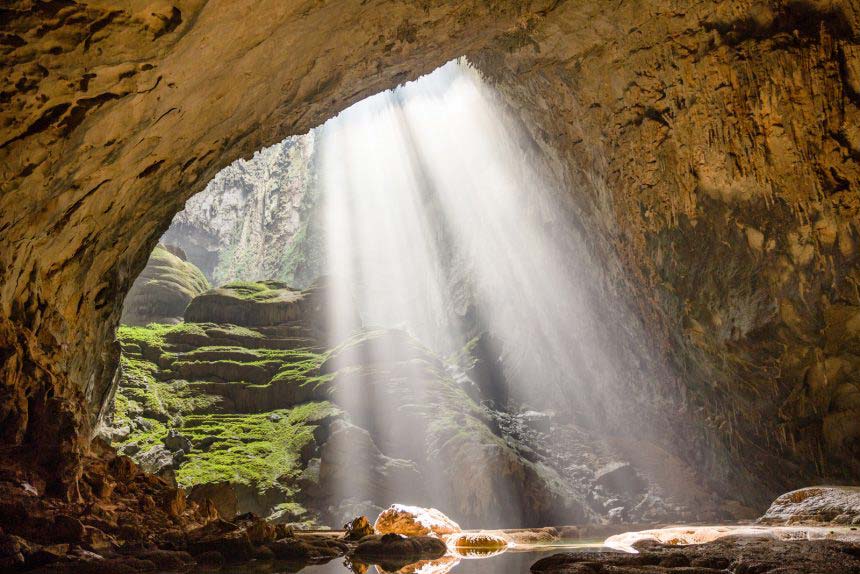Son Doong or Thien Duong cave might have hogged the international spotlight, but other caves are equally spectacular options.
Phong Nha-Ke Bang National Park in Quang Binh Province is frequently referred to as the “Kingdom of Caves” for the magnificent specimens it hosts.
Its profile soared worldwide when the largest and most spectacular cave of them all, the Son Doong, was covered by the likes of National Geographic, CNN, Huffington Post, and Bussiness Insider.
Since then, many famous travel magazines have used this name to refer to the central province of Quang Binh.
Le Thanh Tinh, Director of the Phong Nha-Ke Bang National Park, says more than 350 caves have been discovered in the park over the last 25 years, of which 30 have become tourist attractions. Besides Son Doong, other well-known caves include the En and Pygmy caves, which are said to be the third and fourth biggest in the world.
Son Doong
Three million years in the making, Son Doong was recognized as the biggest cave in the world in 2009. But it is not the sheer size of the cave – the 9-kilometer length, 200-meter height and 160-meter width – that overwhelms visitors. It is what they find inside the cave that renders people awestruck.
The cave has two natural shafts that sunlight can pass through and illuminate its interior. This has allowed a huge primary forest to flourish inside, with tropical flora including coconut palms.
Sunlight streams into the Son Doong cave, nourishing primary forests.
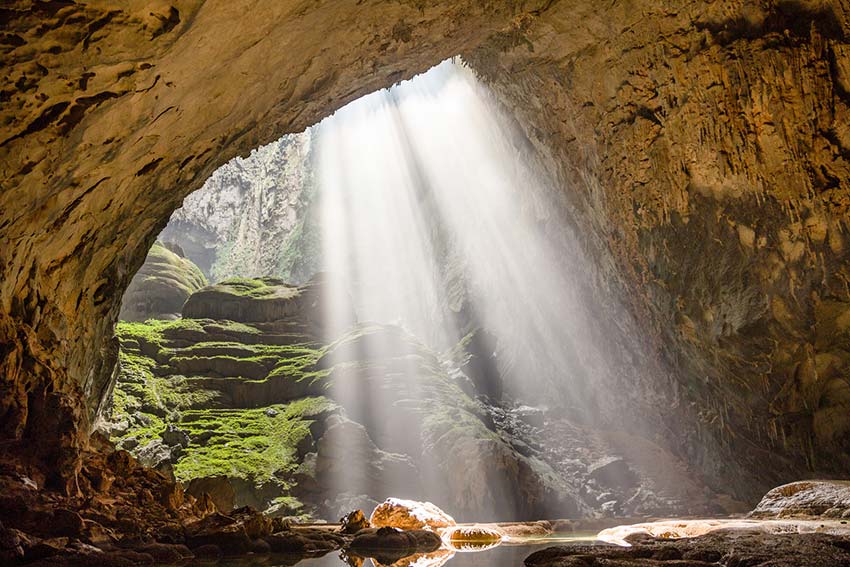
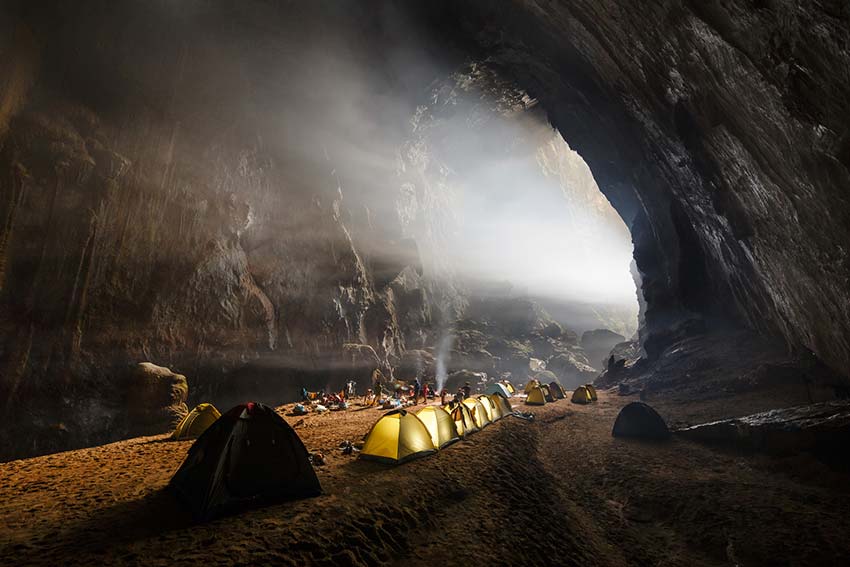
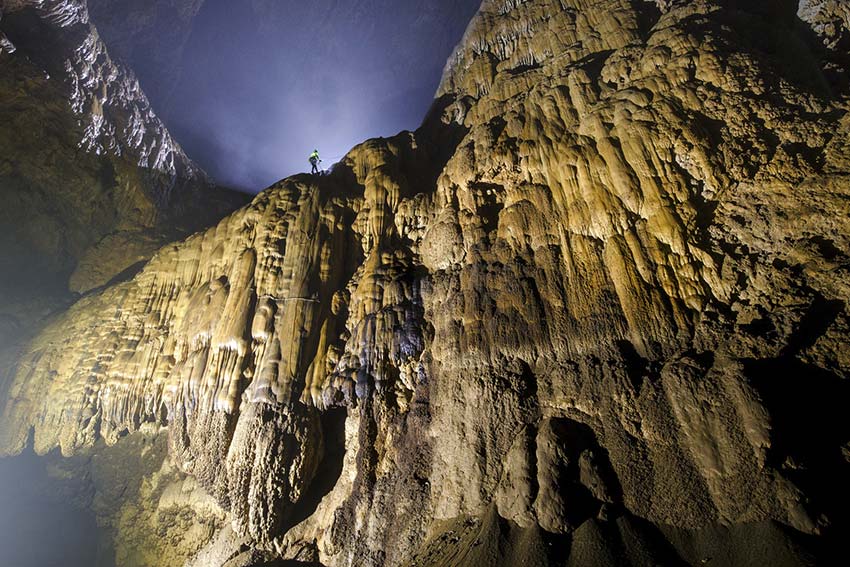
The cave has a large underground river system formed by the Khe Ry and Rao Thuong rivers. The cave’s size fosters cloud formation from the underground river inside its body. These clouds expand and occupy the inner cave, creating a blurry, fantastic scene.
The 90-meter limestone wall, called “Vietnam Wall”, is a stunning feature and final challenge in discovering the cave.
En Cave
The third largest cave in the world, En offers a shortcut to the Son Doong Cave. The cave extends for more than two kilometers through the massive limestone inside the core of Phong Nha – Ke Bang National Park. There are three entrances to the En Cave; the largest cave mouth is 120 meters high and 140 meters wide.
Pristine patches of forests enshrouding En Cave coalesce to present a phenomenally picturesque view that has to be seen to be believed. In other parts of the cave, the cave ceiling reaches heights of 100 meters and horizontally expands to a width of 180 meters.
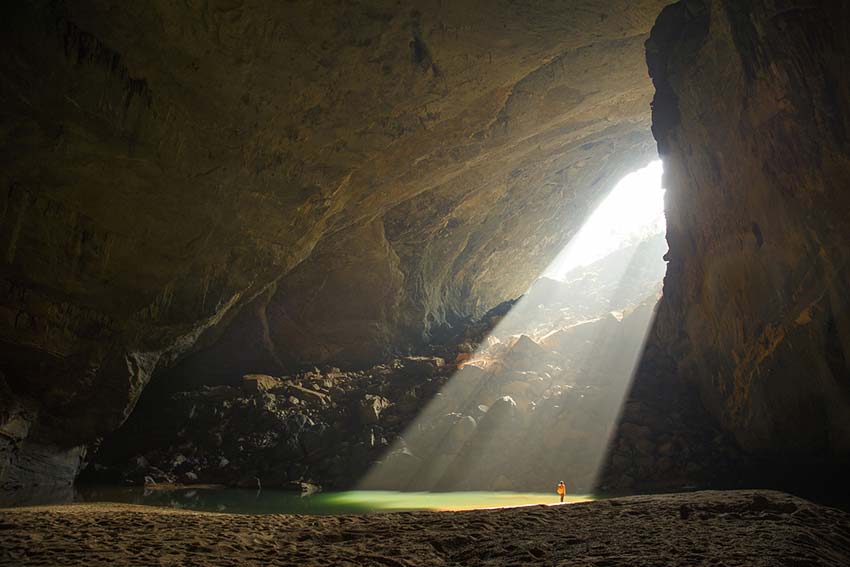
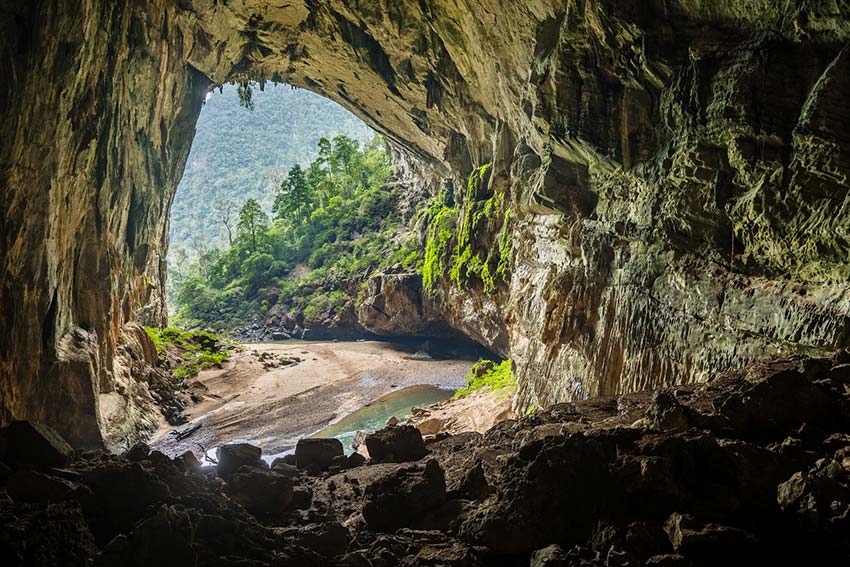
Pygmy Cave
The British Royal Cave Association lists the Pygmy Cave as the fourth largest in the world. The cave stands in the inner area of Phong Nha – Ke Bang National Park in Bo Trach District, Quang Binh. The mouth of the cave is 100 meters high and 845 meters long, allowing sunlight to shine into the cave and sustain the verdant vascular plants. This area is also a camping site during an expedition into the cave.
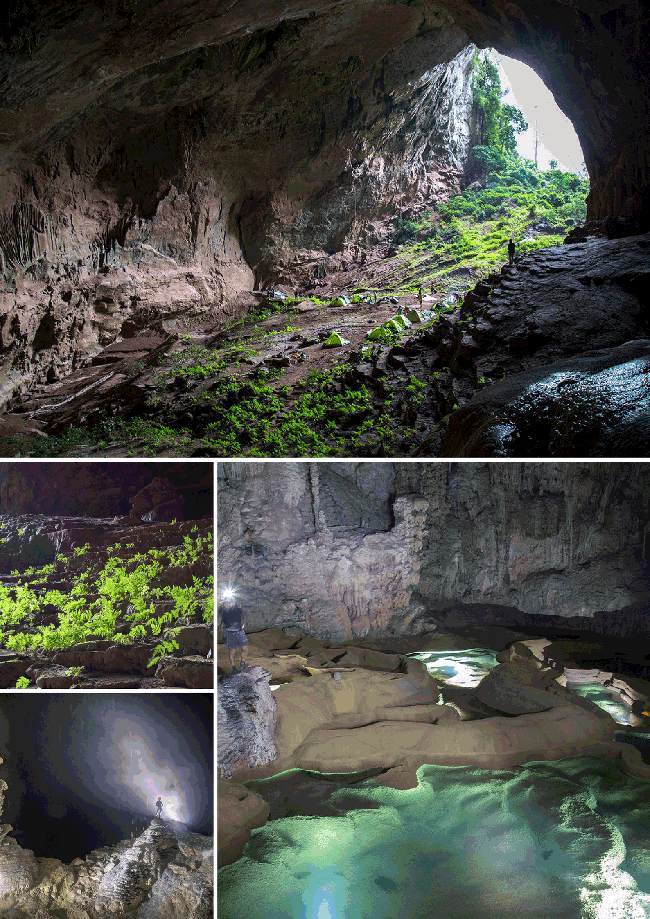
Va and Nuoc Nut Caves
Va Cave, first discovered in 2012, is connected to the Nuoc Nut, a two-kilometer wet cave. The conical stalactites are among the most unique features of Va Cave, though its origins remain unexplained. Va Cave is also home to blind white fish and green pincer shrimp who survive perfectly without light. Many small bats also nest in the cave.
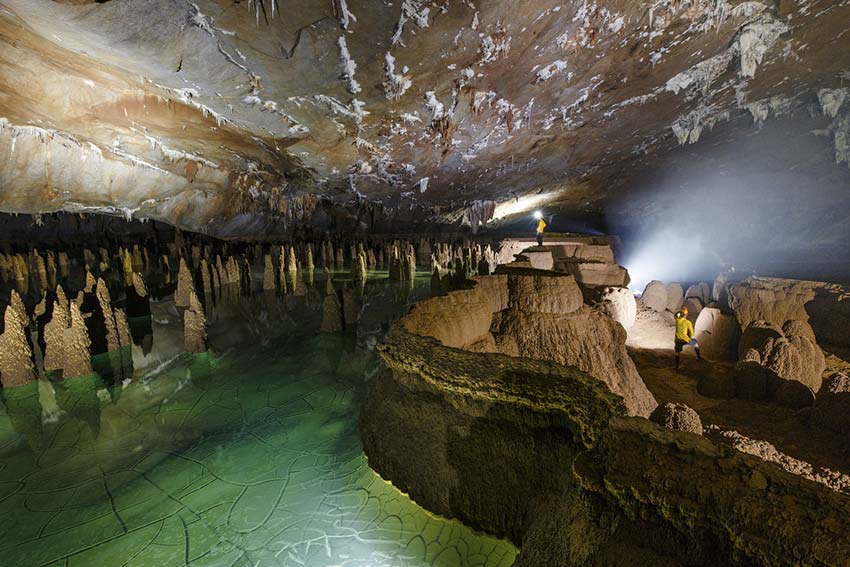
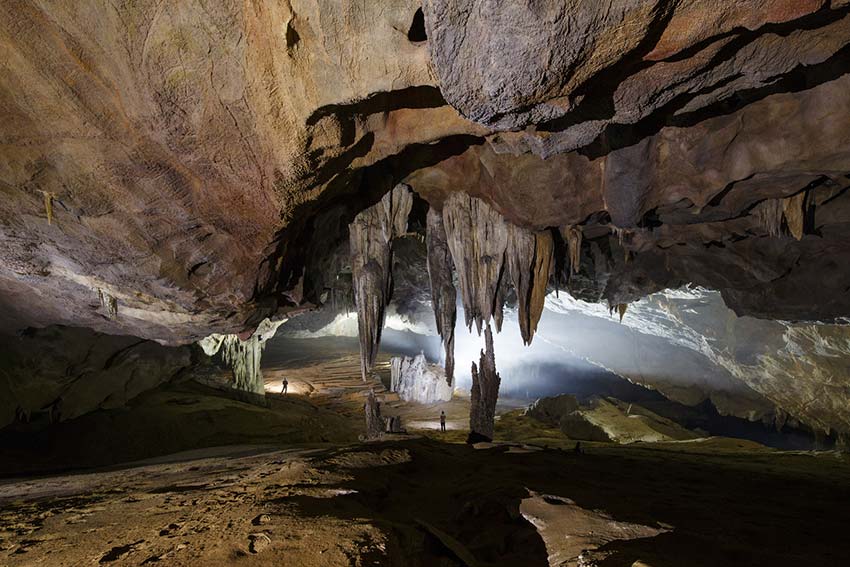
Paradise Cave
At the height of 360 meters, Thien Duong Cave is 9-10 degree cooler than the outside. The cave entrance is hidden behind rock cliffs and forest patches. The inner space is divided into several chambers, the largest of which expands to a width of 200 meters and height of 100 meters.
The stalactites inside the cave resemble different cultural and religious icons like the Goddess of Mercy (Guanyin), fairy, stilt houses and terraced fields. Water drops from the ceiling continue to erect magnificent stalactites inside the cave.
For tourism purposes, a one-kilometer long wooden bridge has been constructed inside the cave. This bridge has set a national record as “the longest wooden path.” More adventurous people can enjoy a 7-kilometer trekking route inside the cave, swim or wade through a 60-100 meter long stream and walk to reach Gieng Troi (Well of Heaven) and enjoy the fantastic sight of sunlight passing through.
Tu Lan cave system
There are in total 20 caves discovered in this area, among which 10 caves have become tourism destinations. While Bi Mat (Secret) Cave is small with various shapes of stalactites, Song cave looks like a majestic palace with distinct coral stalactites. Below are some remarkable caves in the system:
Tu Lan

Tu Lan was discovered in 2010, with two entrances lasting for 2.2 kilometers. The favorable point of challenging this cave is that tourists can cross beautiful valleys that have been movie settings.
Tourists usually explore Tu Lan together with other caves in the system, namely Chuot, Hung Ton, Ken, or Kim. Ken Cave is the longest cave of the Tu Lan system, comprising one wet cave and one 3.7 kilometer cave.
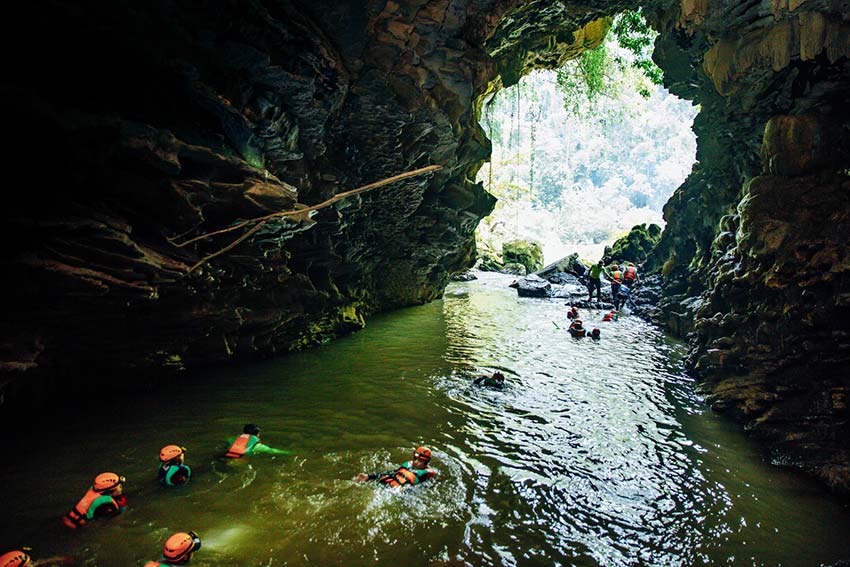
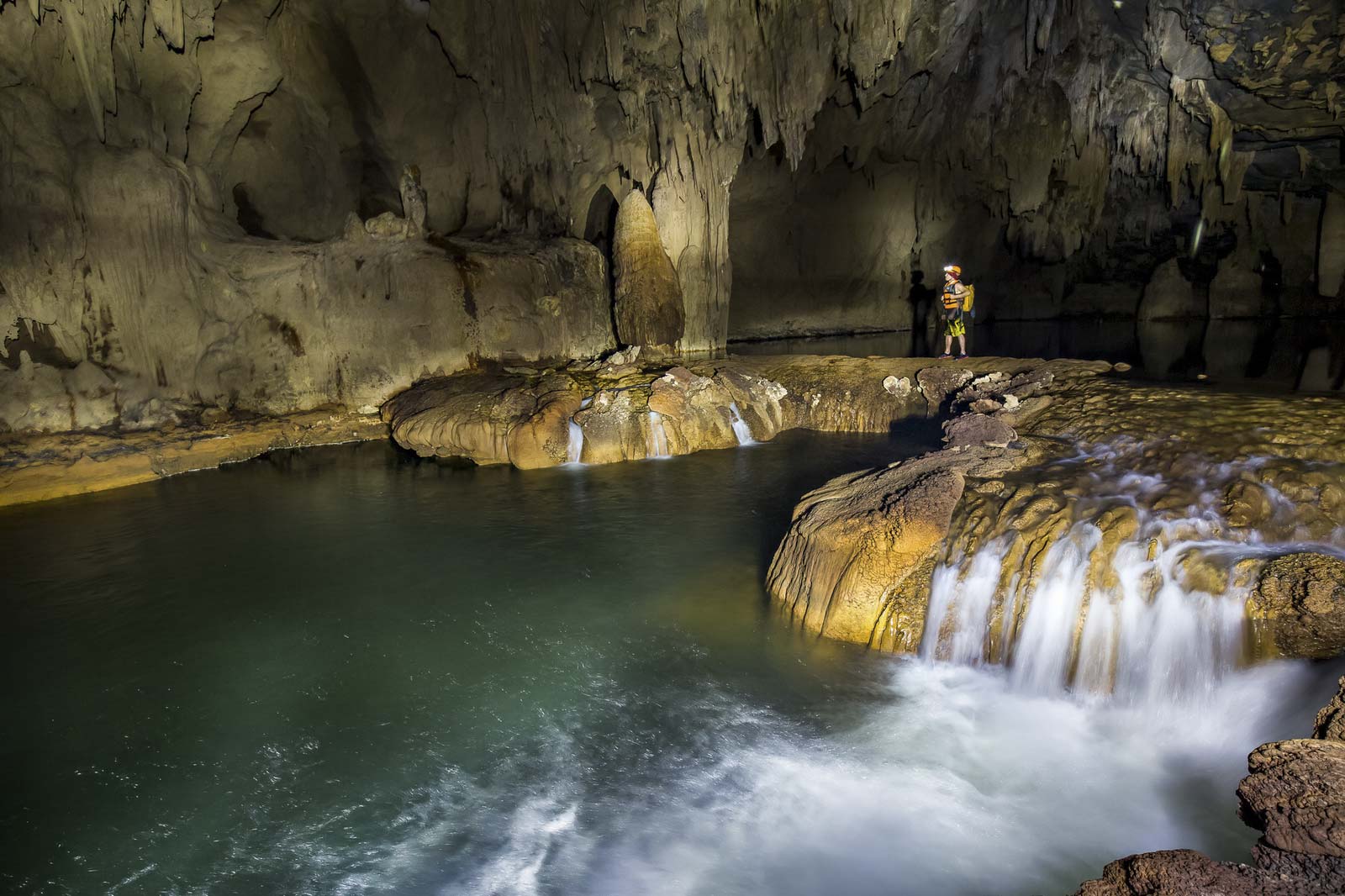
The Tu Lan tour includes trekking through forest, wading through streams, exploring cave rivers and enjoying the scenery at the Tu Lan camping site.
Tu Lan was a filming site for Hollywood blockbuster Kong: Skull Island (2017), and Vietnamese film Nguoi Bat Tu (2018), which is expected to be released this fall.
Tien Cave
Tien Cave, discovered in 1994, is the largest dry cave in the Tu Lan system. It is 2.5 kilometers long, with an entrance leading to the forest. Tien Cave was explored and mapped by British cave experts in 2015 and 2016.
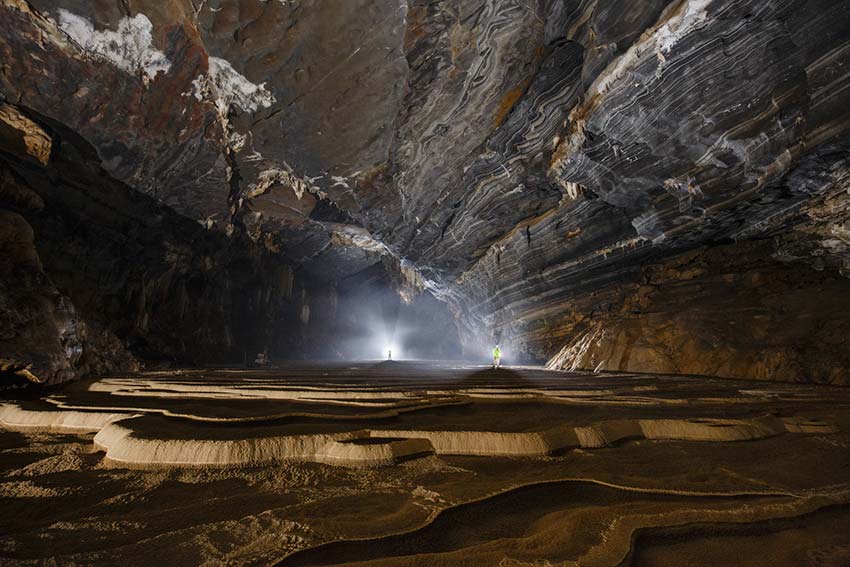
Tien Cave is dry throughout the summer, but a river is formed inside the cave in the rainy season. The water stream of Tu Lan cave has to flow two kilometers underground to reach Tien Cave and its lake. Tien Cave consists of numerous unique stalactites, cave corridors, limestone layers with various veinstones on the rock walls and a population of bats living inside the cave.
Photos by Ryan Deboodt, Ngo Tran Hai An
VnExpress.net

